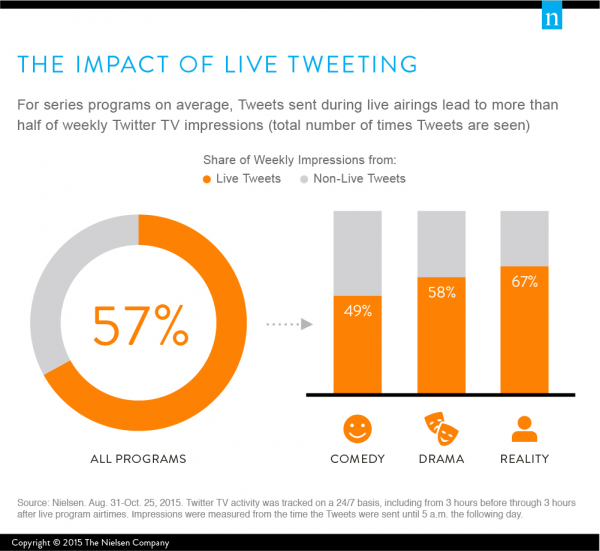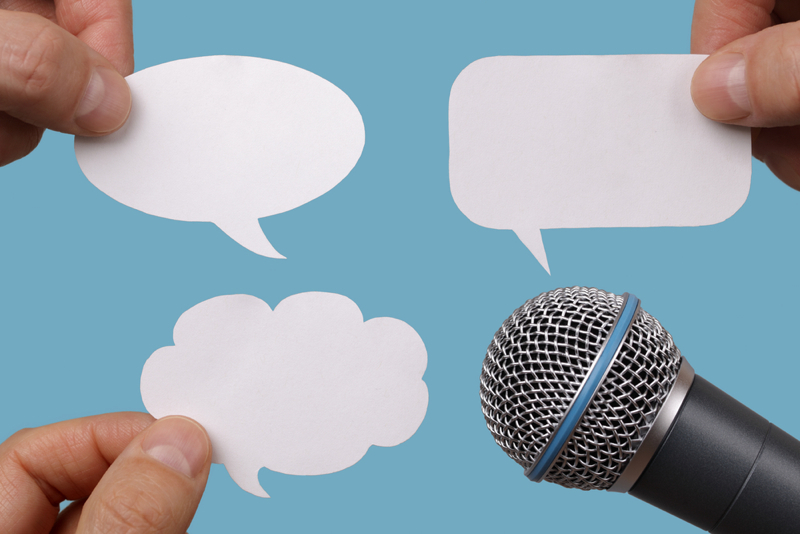Live tweeting while watching a television show is an increasingly common practice, with some shows having actors from the show participating in the action. Although the practice is great for getting viewers to watch a television show during its designated time slot, and therefore can’t fast forward through commercials, a recent study conducted by Nielsen suggests that live tweeting may have other advantages for the show, including impressions that happen later in the week, when audiences are watching through streaming, on-demand, or DVR.
Nielsen taked 96 weekly shows this fall, and monitored TV Twitter activity on a constant basis, watching for tweets written both when a show is airing and when it’s not.
The study revealed that 57 percent of weekly impressions come from live tweeting. However, results differ according to genre. Reality TV shows and dramas get the biggest benefit, with live impressions seeing 67 percent and 58 percent respectively. Comedies only reached 49 percent, which suggests that it benefits more from tweets written when the program isn’t airing live.
 Furthermore, live program conversations see about twice as many tweets on average as those that happen otherwise, making on-air time the best opportunities for program promotions through social media. Not only that, but the number of tweets per author doubles during a live airing. These talkative viewers can make up 8 percent of a weekly program’s authors, and will send out five times more tweets than someone who is tweeting while a program is not airing live.
Furthermore, live program conversations see about twice as many tweets on average as those that happen otherwise, making on-air time the best opportunities for program promotions through social media. Not only that, but the number of tweets per author doubles during a live airing. These talkative viewers can make up 8 percent of a weekly program’s authors, and will send out five times more tweets than someone who is tweeting while a program is not airing live.
Although tweets written on off-airing days might not be as plentiful, about two-thirds them mention a program’s brand or express excitement about an upcoming episode. So, these tweets become a measure of how much buzz a show is getting before it premieres.
In summation, there are three categories of social viewers markets can engage with for maximum impact. There’s the highly active live-tweeter, who makes for powerful cross-promotion opportunities through social media. Then there’s the off-air author, who indicates buzz around an upcoming show, which is an especially good group to watch when launching a new program. Lastly, there are those who fall somewhere in between.

